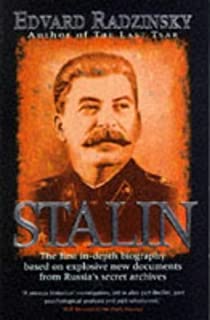To say that The
Journey of Anders Sparrman, by Per Wästberg is a tale of two halves would
transcend cliché. Rarely will one encounter such an apparently complete
transformation of a character mid-way through a story, and even more rarely
will one encounter such a thoroughly credible transformation.
This is a story about a scientist, a botanist explorer of
the eighteenth century. Anders Sparrman was Swedish and was raised in a
straight-laced society. He studied with Linnaeus at a time when a thoroughly
new notion of biological species was emerging from beneath the stone laid by
the creationism of Christian doctrine. A sense of discovering empiricism
pervades this story of a real historical figure. The result is neither
biography nor fiction, whilst simultaneously combining elements of both. Events
are drawn directly from Sparrman’s life, as recorded in his own journals, but
dialogue and encounters between characters are created to embroider the
backcloth of fact. This may sound like conventional historical fiction, but the
sense of biography in this work is always strong enough to dominate.
Anders Sparrman’s story is told chronologically, a device
that only magnifies the eventual transformation of his life. We follow him to
sea as a young man. We accompany him on board Captain James Cooke’s voyages of
so-called discovery. One feels that Sparrman’s work in natural history is where
the real discoveries are taking place, whilst Cooke’s more grandiose and
historically more consequential claims might just be a tad overstated.
Throughout, Anders Sparrman comes across as a dedicated, perhaps rather staid,
sober and conventional documenter of experience. His quest for truth seems
nothing less than single-minded, perhaps myopic, and his thirst for detail
sometimes seems to exclude any view of a bigger picture.
Back at home in Sweden, he moves from one apparently well
done but unappreciated job to another. He takes over the management of an
institution and attempts reform, and thus makes enemies and friends, as might
be expected. As the years pass, his memories of and achievements within his
years of seafaring and travel begin to fade.
But then he discovers sex. She is not particularly young,
beautiful or desirable, apparently. Lotta and Anders, we are told, choose one
another not because of their merits, their appearance or anything else we might
usually associate with breeding partners. Rather, in their case, it was a
mutual sense of desperation that brought them together. It is as if both of
them clutched at and grasped an opportunity life had resolved to deny them. And
then, without qualification, they took a firm grip on their opportunity and
went for it.
Anders Sparrman seems suddenly reincarnated. At least his
relation to biology is redrawn, since he suddenly transformed from observer to
participant, from the narrow end of the microscope onto the slide, so to speak.
A bland and probably predictable life suddenly blossoms by virtue of
involvement, and simultaneously the empiricism that discovered becomes personal
experience that feels and creates.
The Journey of Anders Sparrman, by Per Wästberg
thus becomes a difficult kind of reading experience. Lulled into a sense of
predictable safety by the devotion and dedication to its subject, we spend most
of the book taking risks at sea and in far-off lands without sensing danger.
And then, in the comfort of our own home, we are suddenly propelled into a
vivid universe of emotional and sexual fulfilment that is as threatening as a
warm hearth, but literally takes the breath away. The Journey of Anders Sparrman, by Per Wästberg is a
remarkable experience, both as a book and a life.
















